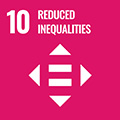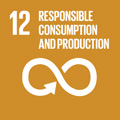- Docente: Monica Turci
- Credits: 9
- SSD: L-LIN/12
- Language: English
- Moduli: Monica Turci (Modulo 1) Gaia Aragrande (Modulo 2)
- Teaching Mode: In-person learning (entirely or partially) (Modulo 1); In-person learning (entirely or partially) (Modulo 2)
- Campus: Bologna
- Corso: Second cycle degree programme (LM) in Language, Society and Communication (cod. 8874)
Learning outcomes
The global aim of this course - which includes lectures and language classes - is to improve students’ communicative skills and provide them with a sophisticated knowledge of selected aspects of the English language and culture also in order to allow them to compete for jobs in the international sector. More particularly, lectures will enable students to think critically about specific varieties of English in connection with their context of production and of reception. This aim will be achieved by providing students with theoretical knowledge taken from linguistics and sociolinguistics, as well as through close readings of authentic texts. This course focuses on the language of tourism as a specific variety of English. Language classes aim at improving students’ linguistic competence; over the two-year period students’ knowledge of English should reach level C2 according to the European framework in all four abilities. These classes will work in connection with the lectures to improve students’ writing skills in particular.
Course contents
Lectures for this course are made up of two modules. The content of these lectures is connected to the project UniVOCIttà and the collaboration with Bologna Welcome as part of the scheme "Ricercatori A PON - green strand". For this reason, particular attention will be devoted to sustainable tourism
First module -- Teacher: Monica Turci
This modulo consists of a theoretical and practical part. The former is a reflection on the language of travel and tourism as a form of multimodal language for special purposes. The aim of this part is to illustrate lexico-grammatical theories and pragmatical functions frequently found in touristic texts. Given the multimodal nature of touristic texts and the importance of the visual, part of this module will be devoted to illustrate students the grammar of visual language.
The second part is practical and consists in the critical analysis of authentic texts of sustainable tourism as an alternative to mass tourism. Particolar attention will be devoted to texts that represent forms of heritage tourism, cultural tourism, environmental and experiential tourism in their context of production and reception. This analysis takes into consideration various text types: from the instagram page, to blogs, web pages, brochures, tourist guides and specialised literature as well as small to medium corpora
Second Module - Teacher: Gaia Aragrande
This module will introduce students to specialised translation in the field of tourism. Starting from the concept of language for specific purposes of module 1, module 2 will focus on the language transfer of LSPs, that is specialised translation. Module 2 will then present students with some tools supporting translation both in its theoretical tenets and in its practice. In particular, students will explore the use of corpus linguistics for translation, learn how to perform better searches on search engines aimed at the retrieving of comparable texts and use some CAT tools to aid their translation practice. Students are strongly invited to use their laptop during this module.
Readings/Bibliography
LEZIONI FRONTALI
PRIMO MODULO
Graham M.S. Dann The Language of Tourism. A Sociolinguistic Perspective (CAB International 2001); capitoli 2, 3, 4 e 7
Sabrina Francesconi Reading Tourism Texts. A Multimodal Analysis (Channel View Publications, 2014); capitolo 1.
Gunther Kress e Theo van Leeuwen Reading Images. The Grammar of Visual Design(Routledge 1996)
All these books can be found in the library
Letture obbligatorie/Readings:
Adab, B., 2001, “The Translation of Advertising: A Framework for Evaluation”, in Babel 47:2, pp. 133-157. DOI: https://doi-org.ezproxy.unibo.it/10.1075/babel.47.2.05ada
Aixelá, J. F., 1996, “Culture-specific items in translation”, in Translation, power, subversion, 8, pp. 52-78.
Katan, D., 2020, “Translating Tourism” in Bielsa, E., Kapsaskis D. (eds) The Routledge Handbook of Translation and Globalization, pp. 337-350, London: Routledge.
Manca, E., 2012, “Translating the Language of Tourism Across Cultures: From Functionally Complete Units of Meaning to Cultural Equivalence” in Textus XXV no. 1, pp. 51-68.
Zanettin, F. 2014, “Corpora in Translation”, in House, J. (ed) Translation: A Multidisciplinary Approach Palgrave Advances in Language and Linguistics. Palgrave Macmillan, London. DOI: https://doi.org/10.1057/9781137025487_10
Letture consigliate/ Suggested Readings:
Gandin, S., 2013, "Translating the Language of Tourism. A Corpus Based Study on the Translational Tourism English Corpus (T-TourEC)." CORPUS RESOURCES FOR DESCRIPTIVE AND APPLIED STUDIES. CURRENT CHALLENGES AND FUTURE DIRECTIONS: SELECTED PAPERS FROM THE 5TH INTERNATIONAL CONFERENCE ON CORPUS LINGUISTICS (CILC2013) 95 (2013): 325-35.
Gries, S. Th., 2006, “What is Corpus Linguistics?”, in Language and Linguistics Compass 3(5), pp. 1225-1241, DOI:10.1111/j.1749-818X.2009.00149.x
Jaworska, S. 2017, "Metaphors We Travel By: A Corpus-Assisted Study of Metaphors in Promotional Tourism Discourse." Metaphor & Symbol 32.3 (2017): 161-78.
Kruger, A., Munday, J., Wallmach, K., 2011, Corpus-based translation studies: research and applications, London: Continuum.
Lecci, C. & E. Di Bello, (2012). “Usare la traduzione assistita” [http://www.clueb.com/servlet/SchedaArticolo?cat_id=3636]. Bologna: CLUEB.
Mattiello, E., 2012, “Metaphor in Tourism Discourse: Imagined Worlds in English Tourist Texts on the Web” in TextusXXV no. 1, pp. 69-84.
Mikhailov Mikhail, Cooper Robert. (2016). Corpus Linguistics for Translation and Contrastive Studies : a guide for research. London and New York: Routledge.
Nigro, M.G., 2012, “From Words to Keywords: The Journey from General Language to the Language of Tourism”, in Textus XXV no. 1, pp 105-119.
Pan, H., & Zhang, M. (2022). Translation and Linguistics. In K. Malmkjær (Ed.), The Cambridge Handbook of Translation (Cambridge Handbooks in Language and Linguistics, pp. 238-257). Cambridge: Cambridge University Press. doi:10.1017/9781108616119.013.
Scarpa. F., (2008), La traduzione specializzata. Un approccio didattico professionale. Milano: Hoepli.
Sulaiman, M. Z., Wilson, R., 2019, Translation and Tourism Strategies for Effective Cross-Cultural Promotion, Singapore: Springer.
ESERCITAZIONI LINGUISTICHE
The dispensa is uploaded on virtuale as public file
Teaching methods
Assessment methods
LEZIONI FRONTALI
FIRST MODULE
A 20 minute oral exam. The oral exam includes a question on the content of the course and an exercise of critical reading of a piece of an authentic text that describes forms of sustainable tourism. This extract will be chosen by students who will have to explain the reasons of this choice. The extract has to be between 300 and 500 words and include an image. Text types chosen include all those that are mentioned during the course.
Evalutation criteria. Knowledge of the content of the module, capacity to apply this knowledge to the analysis of texts; ability to speak without making grammatical mistakes, with a correct pronunciation and intonation
SECOND MODULE
A written take-home exam consisting of a translation from Italian to English of a tourist text and a comment to said translation. The comment to the translation will be carried out using the theories and strategies presented in class. Every student will have approximately 4 weeks to carry out this part of the exam, students will receive their source text the last day of class and the deadline will be after the Christmas break.
Evaluation criteria: comprehension of the theory and practice of module 2. Translation marking will envisage the following three types of mistakes: serious mistakes (severely hindering the comprehension of the target text); significant mistakes (significantly hindering the comprehension of the target text); slight mistakes (hindering the readability of the target text). These three types of mistakes concern the following areas: terminology, syntax, omissions/additions, morphology and concordances, typos and punctuation. Comment marking will evaluate theory competences and their explanation/justification in terms of the translated text, accuracy of the comment in terms of its readability and comprehension. Both comment and translation will be graded individually (1 to 30) and the mean between the two grades (translation+comment) will define the final grade of module 2.
ESERCITAZIONI Prof. James
For all students, those who attend and do not attend the language classes, the written exam will consist of a 500-word essay on a theme connected to topics dealt with during the course. The written exam lasts 90 minutes and is held once per exam session. Students have to pass the exam before being able to register their overall final mark on almaesami. The essay will be assessed at the C2 level of the Common European Framework from various aspects: appropriateness of argumentation relating to the topic; presentation (layout, spelling, punctuation); structure/organization (application of academic writing criteria, cohesion/coherence), and lexicogrammatical and discursive accuracy of the standard academic English required.
The final mark is calculated as follows: The final mark for the lezioni frontali is an average of the marks of the two modules. This is multiplicated by 2, added to the esercitazioni mark and divided by 3. The lezioni frontali final mark will take into consideration students' active participation in class. The esercitazioni mark will take into account work handed in during the course
Teaching tools
Multimedia material, Power Point Presentations, Translation software
Office hours
See the website of Monica Turci
See the website of Gaia Aragrande
SDGs




This teaching activity contributes to the achievement of the Sustainable Development Goals of the UN 2030 Agenda.
